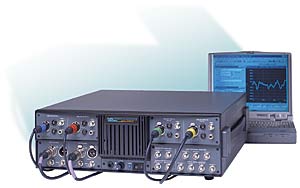
|
January
2003 |
| Tech
Tips - Audio Testing for Optimal Results, is designed to provide
you with pertinent information that will help you get the most performance
from your audio-related products and devices. New TechTips will be
added periodically covering additional subjects. We invite you to
subscribe to TechTips to receive email notification when we add new
topics. Please note: Access to TechTips requires registration. Registration is quick, easy, and free but does require that your browser have cookies enabled. |
 |
One of the most important quality checks of an audio device is its noise or signal-to-noise ratio. Noise can be expressed many different ways; as absolute noise, as a ratio, and as weighted, unweighed or band-limited. There are many possible sources of noise in audio circuits — poor design, a malfunctioning part or faulty power supply filtering. Even the characteristics of the measuring instrument will affect the result. The wide number of factors involved in measuring noise makes it difficult to make valid performance comparisons between devices. Click here to learn more
Designed for the mass market, consumer PC sound cards can vary greatly in quality, features and characteristics. A typical, inexpensive PC sound card has the capability to record and play .wav file format 16-bit PCM stereo digital audio at a 44.1 kHz sample rate. Here are some audio performance considerations concerning the recording and playback functions of PC sound cards. Click here to learn more
Distortion measurements for audio signals can be made using conventional analog analysis techniques or by converting the signal into its digital representation by means of a precision ADC, then applying DSP analysis techniques. The results of these two methods are slightly different, with the DSP technique sometime reporting more distortion and noise, sometimes less. hy is this?
Click here to learn more